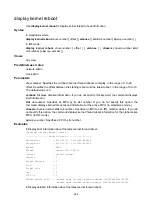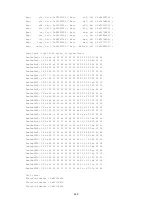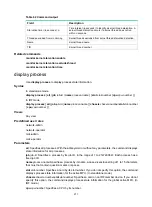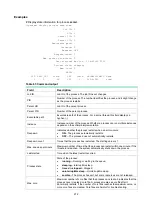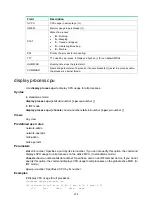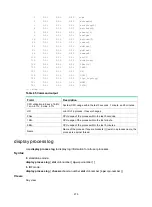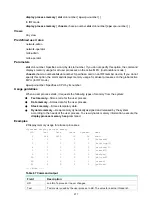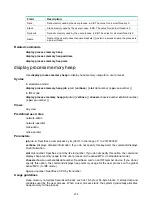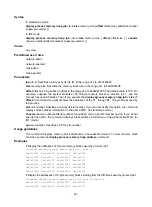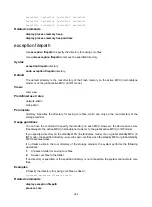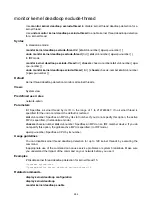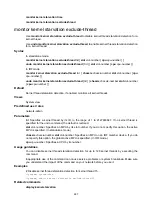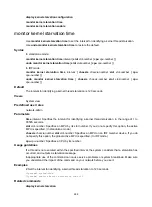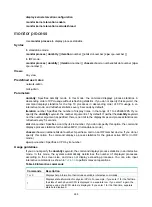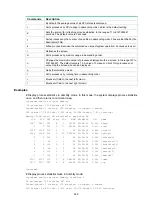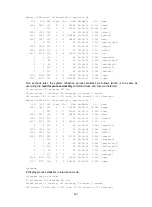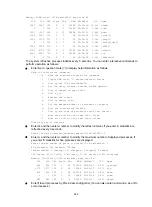
277
display
process
memory
[
slot
slot-number
[
cpu
cpu-number
] ]
In IRF mode:
display
process
memory
[
chassis
chassis-number
slot
slot-number
[
cpu
cpu-number
] ]
Views
Any view
Predefined user roles
network-admin
network-operator
mdc-admin
mdc-operator
Parameters
slot
slot-number
: Specifies a card by its slot number. If you do not specify this option, the command
displays memory usage for all user processes on the active MPU. (In standalone mode.)
chassis
chassis-number
slot
slot-number
: Specifies a card on an IRF member device. If you do not
specify this option, the command displays memory usage for all user processes on the global active
MPU. (In IRF mode.)
cpu
cpu-number
: Specifies a CPU by its number.
Usage guidelines
When a user process starts, it requests the following types of memory from the system:
•
Text
memory
—Stores code for the user process.
•
Data
memory
—Stores data for the user process.
•
Stack
memory
—Stores temporary data.
•
Dynamic
memory
—Heap memory dynamically assigned and released by the system
according to the needs of the user process. To view dynamic memory information, execute the
display process memory heap
command.
Examples
# Display memory usage for all user processes.
<Sysname> display process memory
JID Text Data Stack Dynamic Name
1 384 1800 16 36 scmd
2 0 0 0 0 [kthreadd]
3 0 0 0 0 [ksoftirqd/0]
4 0 0 0 0 [watchdog/0]
5 0 0 0 0 [events/0]
6 0 0 0 0 [khelper]
29 0 0 0 0 [kblockd/0]
49 0 0 0 0 [vzmond]
52 0 0 0 0 [pdflush]
---- More ----
Table 67 Command output
Field Description
JID
Job ID of a process. It never changes.
Text
Text memory used by the user process, in KB. The value for a kernel thread is 0.


